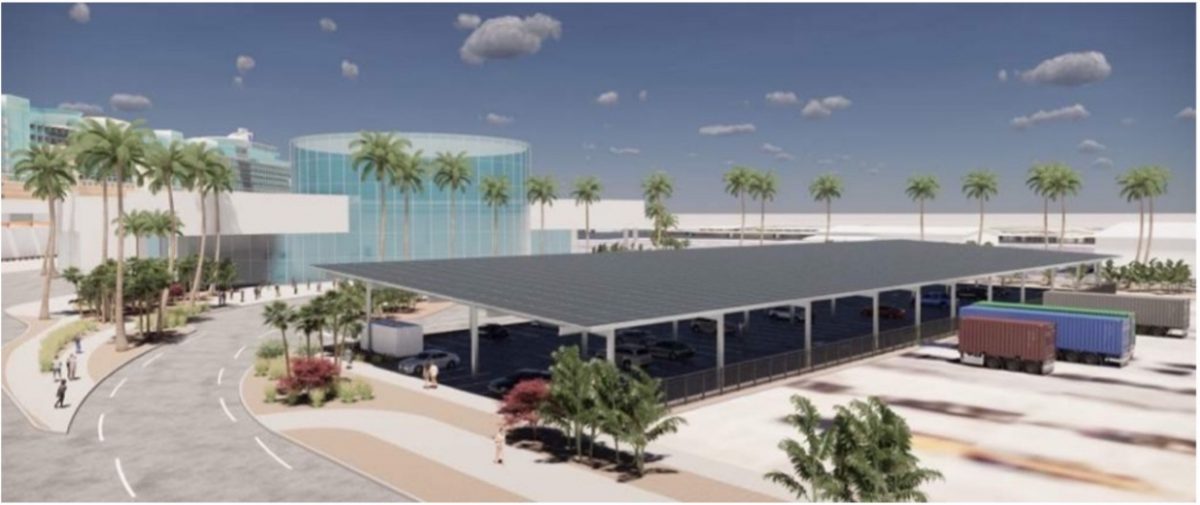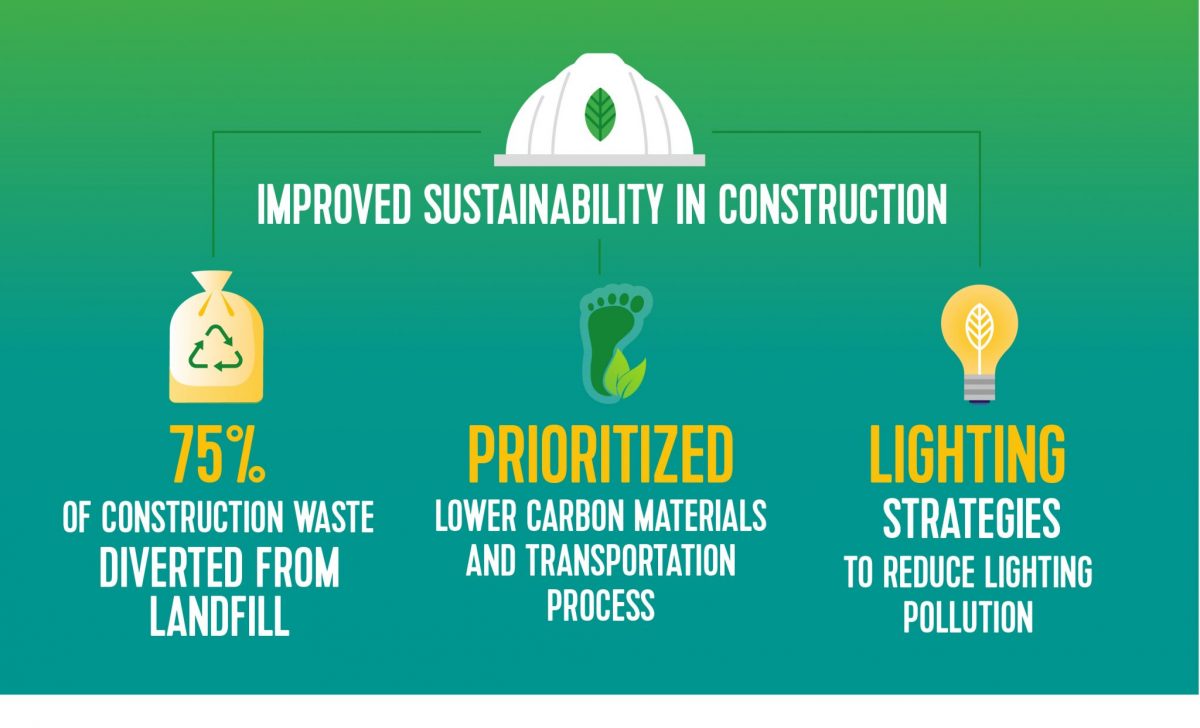Royal Caribbean Group has revolutionized the cruise terminal experience by building the world’s first LEED Zero Energy cruise facility. The Galveston Cruise Terminal, covering an area of 161,334 square feet and costing $125 million, opened in November 2022. This state-of-the-art facility is another step forward in the company’s sustainability journey while delivering the best vacations responsibly.

Royal Caribbean Group’s terminal at Port of Galveston in Texas.
From concept to construction, Royal Caribbean Group thoughtfully approached design strategies aligned with its holistic environmental goals, its focus on advancing sustainable infrastructure development, and its decarbonization strategy — Destination Net Zero. By developing an alternative power solution to operate the Galveston Terminal and promoting alternative transportation solutions, the company stays true to its promise to achieve net zero emissions by 2050.

The 100% solar-powered terminal features a parking deck created using 30,000 square feet of photovoltaic solar panels to generate the energy needed to operate with zero reliance on the local grid. Any remaining energy not used by the terminal is sent to the local power grid to support the surrounding communities.
“We are focused on innovating across all aspects, especially in our work to advance sustainability in the communities we visit,” said Jason Liberty, president and CEO, Royal Caribbean Group. “We deeply value both the oceans we sail and the communities we visit and operate in, and the modern design and development features at our terminal in Galveston will work in service of both.”
The team’s focus on improving sustainability in construction began by prioritizing lower carbon materials that produce less carbon footprint based on energy and during the transportation process. Inside the terminal, they installed materials with low or zero Volatile Organic Compounds (VOC) content and enhanced air filtration media to minimize indoor pollution and provide occupant thermal comfort and controllability for guests. Post-construction, the team diverted 75% of waste from landfills.

Implementing strategies to reduce exterior lighting pollution may help minimize negative effects on the night sky and the surrounding community, and using lower carbon materials contributes to the regional and global environmental benefits the terminal will have.

The Galveston Terminal project also allowed the company to promote alternative transportation solutions. The terminal provides bicycle facilities and Electric Vehicle (EV) charging stations to improve community connectivity and reduce transportation-related carbon emissions.
The terminal is the first in Texas to achieve the industry-leading certification, Leadership in Energy and Environmental Design (LEED) Gold certification. The Galveston terminal marks Royal Caribbean Group’s fourth LEED-certified and first Gold-certified facility. Previous projects include Terminal A at PortMiami and the Innovation Lab at the corporate headquarters in Miami, among others.
For more details about the terminal, read the press release.





